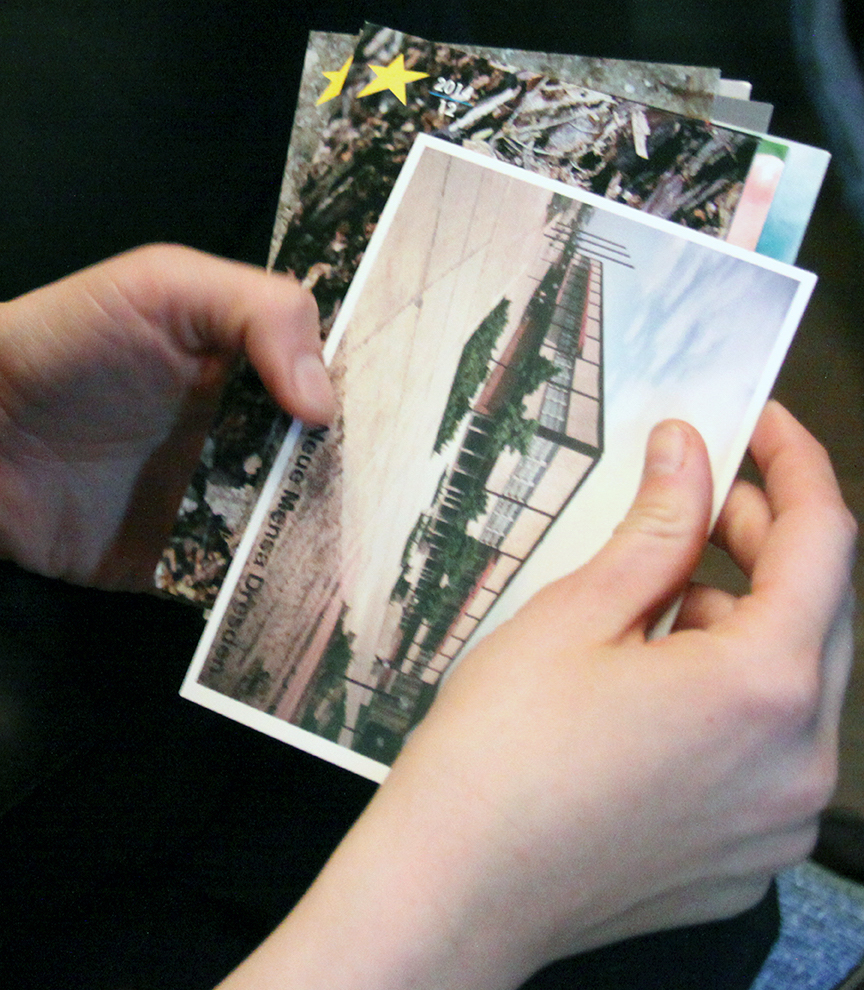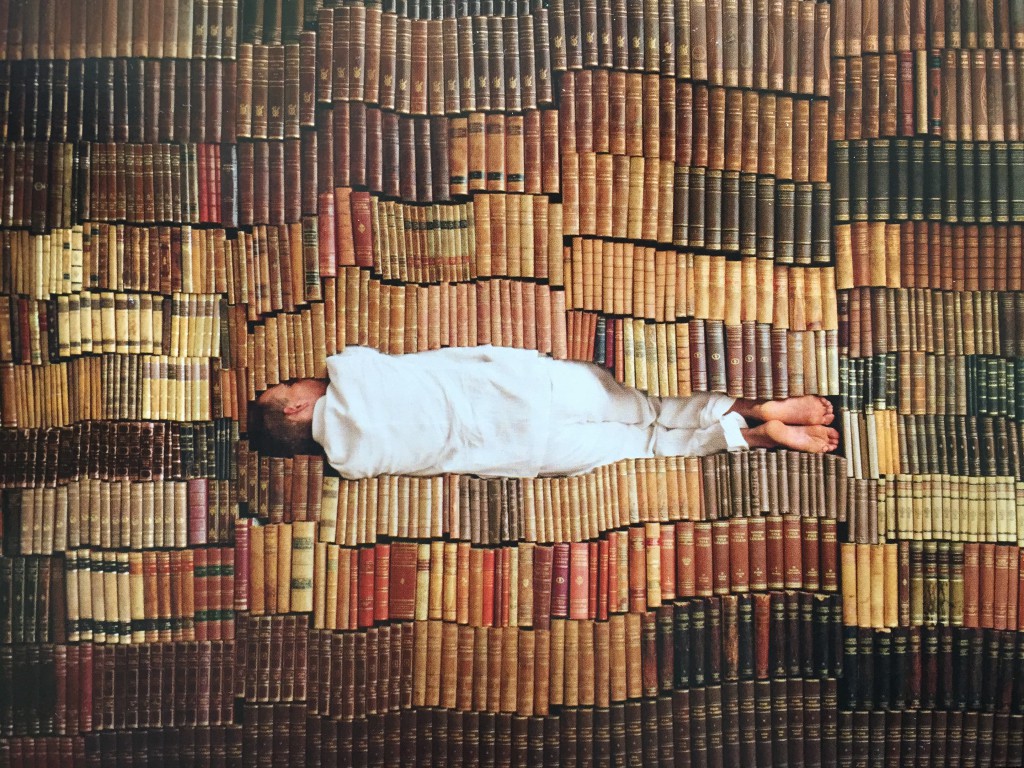
Postcard Parlor Games, an experiment facilitated by Don Ball and Mark Dion at ART21’s Creative Chemistries art and education symposium in February 2015.
This exercise in creativity can be done with a group of friends to spark inspiration, or in a classroom to engage students in creating their own connections between words and images. In this activity, you utilize word associations to write poems inspired by images or works of art. The materials required are postcards, paper, and writing utensils.
Any kind of postcard will suffice; all will create an opportunity to develop a critical analysis of visual cues. Postcards featuring works of art are helpful in engaging abstract thought, and travel postcards can serve as a platform for discussing the representation of each “place” and its associations with the image.
I typically complete this activity with high school students in a 70-minute class, but it’s easily adaptable according to each group or classroom’s needs.
Step 1: Choose a postcard to consider. Make sure it’s one that interests you so that you’re able to continually examine it. Across the top line on a loose sheet of paper, write the first five words that come into your head when looking at the postcard. Then, fold the paper behind, so the words can’t be seen.
Step 2: Move to another postcard that was chosen by someone else, and without unfolding their sheet of paper, across the next line write the first five words that come to mind when looking at this new postcard. Everyone keeps folding the paper behind, so previous responses can’t be seen. Keep responding to new postcards until you’ve written words for a dozen or so images.
Step 3: Finally, return to the first postcard you selected and write five more words. Then, unfold the paper and read the responses from others.
There are usually several similar words, reinforcing the idea that the photographer or artist is directing the viewer. But some words will seem particular, even peculiar, and might help you see something new in the image.
Step 4: Then, create a poem using one word from each person’s response to the postcard.

Postcard Parlor Games, a Creative Chemistries experiment. Photo: Don Ball.
At the end of my classes, I have the students show their postcards to a small group while reading their poems aloud. Students listen intently to hear which of their own words made it into the poem. I then ask each group to nominate one poem to be read aloud to the class, and we read the selected poems as a class at the end.
I once had a student ask if she could write a diamante (a French poetry style made up of seven lines to form the shape of a diamond) for her poem about a French painting. Make sure students know that they can have fun with this exercise and make up their own rules according to what it is about the image that most inspires them. I encourage students to remember the value of poetry and associative poetic thinking when writing essays or curatorial statements.
Here is a past example from a student:

Maria Friberg. Still Lives #3, 2005.
The words chosen by different students were:
sleep, books, order, piles, white
monk, buried, reading, library, old
man, sleep, bound, coffin, death
encyclopedia, overwhelmed, old, exhausting, chaos
squished, hidden, patience, white, dead
myth, volumes, pages, bookworm, forgotten
calm, peaceful, accident, stacks, obsolete
And the poem that resulted from these words read:
You are made of history
buried deep enough into your grave
that stories surround you
and refused to let you sleep.
Your coffin is a stack of myths and truths
they won’t let you hide
they won’t let you sleep
they will make you old and young again.
Patience is not a virtue here,
it is a setback.
Devour these imagined lives
and consume their possibilities.
Encompass yourself in
the infinite number of words.
Mark Dion and I facilitated an extended version of this exercise for a group of artists, art educators, students, and art administrators at ART21’s Creative Chemistries symposium on art and education last February. See the results here.



